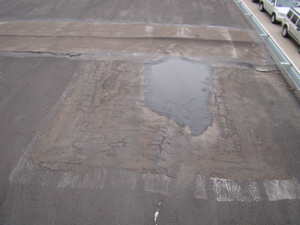Flat Roof Solutions: Primary Causes of Flat Roof Deterioration
Roofers use different materials for flat roof solutions depending on the specifications of the homeowners and needs of each structure. Among the materials used are BUR (Built-up Roof Membrane), Elastomeric/Plastomeric Roof Membranes (which include EPDM or ethylene propylene diene monomer, Neoprene, PVC or Polyvinyl Chloride, TPO (Flexible Thermo Polyolefin) and Polymer-modified bitumens) and Fluid-applied Roof Membrane.
Each material has its own strengths and weaknesses. Some are improved versions of the others. For instance, modified bitumen incorporates modifiers such as APP (tactic polypropylene) and SBS (styrene-butadiene-styrene) to improve the performance of asphalt.
No matter what material is used for flat roof solutions, deterioration eventually sets in and the roof membrane has to be repaired or replaced to keep the roof in optimum condition. The usual factors that lead to deterioration of flat roofs are as follows:
1. Temperature
Fluctuations in temperature with the accompanying contraction and expansion of roof materials create strain on the roof structure. Flashings could break at the seams, roof material could tear and mortar could crack. All these create entryways for water to seep inside.
2. Sunlight
The volatile components of asphalt or tar on the roof evaporate when exposed to the heat of the sun. The heat also oxidizes asphalt and makes it brittle. The roofing material eventually loses its elasticity and the surface could crack or flake, exposing the felt membrane below the surface.
3. Settlement
Strains are sometimes exerted on flashings after the walls settle. In some cases the roof could settle below the drain pipe level. These occurrences cause floodwater to back up the roof or allow water to seep through the leak on the drain.
4. Roof Traffic
Most roof materials are not designed to withstand constant foot traffic or extra accessories. Walking on top or placing objects on the roof could causes serious damage to the materials and roof deck.
5. Water
Once cracks appear on the surface of the roof, water could seep inside and cause damage to the structure if left unattended. Water or moisture left inside can turn into ice under cold or freezing temperature, which could tear new holes.
6. Wind
Strong winds may push water inside cracks or splits on the surface, particularly at defective seams or joints. They may also tear the roof at its weak spots such as at loosed seams. In addition, storms accompanied by strong winds have been noted to move or sway the roof structure itself.
7. Chemicals
Acids, saturated animal fats and pollutants have the potential to damage roof materials. That is one reason why manufacturers recommend the application of coatings and ballast covering to protect the roof membrane from these harmful chemicals.
